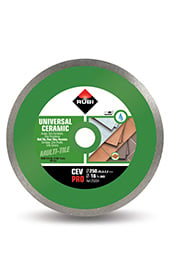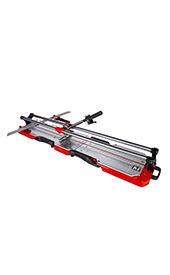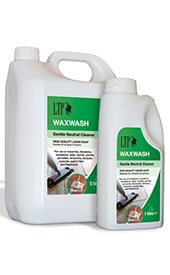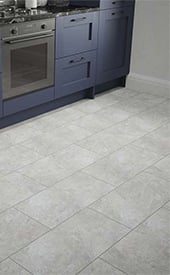Tile Tools Every Trader Should Have


Starting a tiling job requires a lot of planning and preparation, including measuring space, choosing tiles and selecting the best grout and adhesives. In fact, fixing tiles can be considered an art.
Having an eye for layout and design, along with the skill and expertise of cutting and laying tiles can take years of practice. That said, not having the relevant tools for a tiling job can also hugely impact the job at hand.
By choosing the right tiling tools, you can reduce the time spent on a job and get a better quality finish too. But which tile tools are essential for getting the job done? If considering which tools you need is a daunting task then don’t worry, as we’ve put a list together of tile tools that every trader should have.
Must-Have Tile Tools
Researching and discovering which tiling tools you should invest in can be a huge exercise. But as a starting point we recommend the ones in this list, because in our opinion, a tiling job is impossible without the tools shown below.
Protective equipment
Both for yourself and for the area you are working in. Protective equipment is important to have before starting any project.
Protective clothing including goggles and gloves should be part of your kit, because it’s inevitable that you are going to cause a bit of a mess. Your clothing will need to be hardwearing, to withstand the graft you are about to put into your work. Protective goggles are essential for when you are cutting tiles, in addition to latex or nitrile gloves for protection against cement burns.
Dust sheets are also great to have on hand to protect the surrounding area of your tiling job. Not only are they somewhere to place your equipment to protect the floor from getting dirty, but dust sheets can also be used to protect ceramics like bathtubs and sinks of damage.
Measuring equipment
A pencil, chalk and measuring tape are probably the most simple tools, but so important for perfecting your tiling.
For measuring gaps and m2, a measuring tape is a toolbox staple item and accurate measurements can have a huge impact on your process. After all, if your measurements are not correct and you have incorrectly cut tiles, there’s no going back and you could have a huge amount of waste and an awkward conversation with your customer. For the best accuracy, use a clean tape measure, free of markings to save any confusion and minimise mistakes.
A trusty pencil is also good to have at hand when you are tiling for marking measurements and starting points. We would also recommend having some chalk in your kit too, as pencil isn’t the best choice for marking the top of a tile. Chalk is also more prominent when making lines across the floor and for providing an overall laying guide across the surface area you are tiling.
Scraper
Another tool for the preparation stage of your project; a scraper is the perfect tool for ensuring your area is clear of old paint and adhesives from previous work.
A clean foundation forms the basis of a great tiling project, so it’s important to make sure this is done properly.
Cleaning equipment
Sponges and clothes can provide the finishing touch to a project when removing excess grout from the surface of tiles. That said, it’s good to get into a habit of cleaning surfaces as tools as you go to minimise any marks or damage. It also prevents grouts or adhesives setting in places that they shouldn't be setting.
A heavy duty, dense-celled sponge like the Virtrex Professional Tiling Sponge is best, as opposed to everyday kitchen sponges are best at removing stubborn grout. A microfibre cloth is ideal for polishing the tiles once you’ve finished your work to give them a gleaming finish.
Small bits of dust and dirt can soon make the working area uneven, so it’s also important to dust down as you go using a dustpan and brush. Again, keeping on top of this as you work will keep the area as clean as possible and keep the time cleaning to a minimum at the end of your project.
Tile cutter
Unfortunately, not all rooms are perfectly square, so a tile cutter is essential for most tiling jobs. As well as cutting tiles to fit, cutting around edges and door frames are where you will use your tile cutter a lot.
There are 3 different types of tile cutter, the most suitable will depend on the tiles you are cutting and how you intend to use them.
Manual Tile Cutters
Manual tile cutters are quite universal and provide a straight cut in ceramic and porcelain tiles. Investing in a powerful cutter like the Rubi TZ Tile Cutter can turn a demanding job into a simple and easy process. Their versatility and lightweight features speed up the cutting process, whilst giving a clean cut and fantastic precision.
A cutting tool with different cutting measurements also gives more flexibility if you are cutting large format tiles. A double guide cutter can also give better visibility when scoring and cutting.
Electric Wet Saw
For both straight and angled cuts which are extremely precise, electric wet saws can cut ceramic, porcelain, glass and natural stone tiles.
To eliminate dust and to keep the blade cool and minimise chipping, water is used whilst cutting through tiles.
The Rubi DU-200 Wet Saw is a lightweight, portable cutter that is ideal for renovations and light works.
Angle Grinder with Blade
An angle grinder like the Vitrex Angle Grinder are a smaller and more affordable option, which is a good option for if you are setting up your kit.
You will need to choose a blade to use with your angle grinder if you choose to use this type of tile cutter. Keep in mind how it will be used; what type of tiles are you cutting, are you dry or wet cutting?
We recommend using the Rubi TVH Diamond Blade, which is a great choice for even the most demanding of jobs.
Diamond Drill Bits
Although not officially a tile cutter, Diamond Drill bits are an equally important tool for your kit. You may come across the need to drill a hole into tiles for pipes, drain or tap connections. Diamond drill bits are precise and high-quality tools which ensure that a hole will be made without cracking the tile surface.
Especially important if you are working with hard materials like porcelain, diamond drill bits come in different diameters which allow you to safely cut holes of different sizes whilst getting the best finish. The Rubi DryGres Drill Kit provides 4 different sizes for flexibility.
Buckets
Buckets are often overlooked, but come in handy for a variety of reasons. When making grout, you will need a bucket for mixing; make sure this is clean so that it doesn’t affect or discolour your grout.
A bucket of clean water is also good to have around for cleaning any excess adhesives or grouts from tile surfaces, or for any accidental spillages. Water is also needed for the mixing process, so it’s good to be prepared with a clean bucket of water.
Mixing in a bucket is recommended due to the amount of mess that could be made in a smaller sized bowl, so it saves a huge amount of cleaning up time. We recommend a rubber bucket like this 12L Mixing Bucket for everyday projects, or for bigger jobs we also stock a 40L Flexitub Bucket. Flexitubs typically require less cleaning time than plastic buckets and are super durable.
Electric mixer
An electric mixer is a key component for any tiling project for preparing the perfect consistency of grout and adhesives.
With varieties of speeds and motors, mixers ensure a perfect consistency for longer-lasting installations. The Vitrex Electric Power Mixer with variable speeds and easy to change brushes is a powerful and high performance option.
Ensure you check which paddle should be used for the products that you are mixing to provide the best finish for the mix.
Tile adhesive trowel
Making sure that you have an even covering of adhesive is essential when applying tiles to a surface. You should have a smooth and flat tiled surface, and a trowel is the tool to help achieve that.
A notched trowel like the Rubi stainless steel range creates grooves in the adhesive, which indicates that the consistency of the adhesive is correct. If the ridges don’t stay in place, the consistency is too thin.
The grooves also create airways to help the tile stick, as it creates more of a suction between the tile and adhesive. Trowels also come in different sizes, so you have more choice depending on the job you are working on.
It’s important to choose the best trowel for the job; these square notches are normally more suitable for floor tiling as they give a thicker bed of adhesive. Trowels with curved notches are most suited to wall tiling, so it’s probably a good idea to have both types of trowel in your kit.
Rubber mallet
When levelling tiles, a rubber mallet helps to keep everything level when gently knocked against the tiles. It is especially useful with large format tiling. This Vitrex Rubber Mallet is specifically designed not to mark your tiles, so you can create a perfect level without any damage.
Spacers
Spacers are small plastic cross shapes, used to keep a uniformed distance between tiles during the installation process. Without using spacers, the finished look of a job would not be as neat or professional.
You can get spacers in a variety of different sizes, so the choice on how much space you would like between tiles is entirely up to you. As a guide, the British standard minimum recommendations for grout spacing is 2mm for walls and 3mm for floors, or 1mm with rectified tiles.
For consistency and an overall aesthetically pleasing look, despite essentially being a small amount of plastic, spacers make a huge amount of difference to a project.
We recommend these 2mm Rubi Spacers are great for use with any tiles, and are hard wearing to prevent any crushing or bending.
Tile grout float
Grout floats are for spreading grout into the spaces between tiles. Grout floats help to make the grout as smooth as possible, and are made from rubber so as to not scratch the tile surface.
It’s vital to keep your float clean both during and after the grouting process, because it will both protect new tiles from hardened grout scratches and also extend it’s life.
Though they do wear and become less effective over time, so as they are inexpensive we would recommend to buy replacements periodically.
Nice to have tile tools
The above tools are what we could consider essentials for a tiling job, however we’ve also provided a list of ‘nice to have’ tools. These aren’t essential for every tiling job, but can help to make your job that little bit easier if you had them in your kit.
Step Ladder
For any wall tiling jobs, a step ladder can be hugely helpful in getting to those hard to reach areas. Consider how high you will be tiling and if this would make your job easier and quicker. Always remember to stay safe by checking the surrounding area for objects which may obstruct the ladder.
Wooden baton
When tiling walls, wooden batons can be temporarily screwed to the wall to give extra support to tiles until the adhesive is set. Spacers still do a good job of keeping tiles stable, but wooden batons give that added support for extra peace of mind.
Knee pads
For protecting knees from injury when tiling floors, as pressure from balancing your body weight on knees when tiling can be a strain on knee joints.
Stanley Knife
A handy tool to have because you never know when you might need it. For tape cutting, opening packaging, cutting silicon nozzles and more.
Spirit Level
This tool is not exactly essential for getting the job done, but is certainly essential if you want a good quality finish with straight lines.
Sometimes walls and floors may not be straight, but many tilers have made the mistake of starting to tile in one corner, to then find that the tiles in fact go off in a crooked line. Use a spirit measure to be sure and save time.
Grout finisher
A grout finisher is only really needed for grout joints of 2mm or less. It helps to fill the hard to reach areas or to top up any grouting gaps and then sweep over to a smooth finish.
Typically, one end is the ‘blade’ for applying grout mixture and the other is the ‘ball’ for smoothening the grout to a highly professional finish.
Tile Nippers
For making more precise or irregular cuts into tiles; tile nippers are handheld tools for taking small chunks of tile in a controlled manner. Tile nippers allow you to carefully snip away and create the exact shape you require for fitting around pipes, light fittings and other tricky areas.
Make sure the tile cutters are suitable for the material you are cutting. These Rubi nippers are especially for hard materials, but some are specifically designed for certain tile materials.
Tile levelling system
Tile levelling systems, like the Vitrex Levelling System, help to reduce costly call backs by ensuring that finished flooring is lippage-free.
Similar to spacers, they prevent tiles moving during the adhesive setting time and so improves the surface flatness.
Summary
Tiling tools differ between jobs, tiles used and personal preference, but these are our recommended tile tools that we think every trader should have. But remember, the quality of the job depends largely on tools used, as well as the experience of the tiler.
Our range of tiling tools from leading brands such as Rubi tools and Vitrex provides you with just about every accessories you could require to make sure your job is completed to the highest standard.











































 and then Add to Home Screen
and then Add to Home Screen